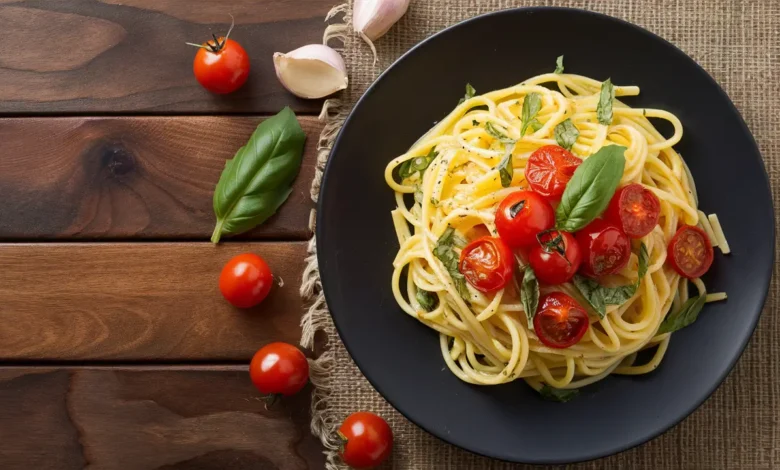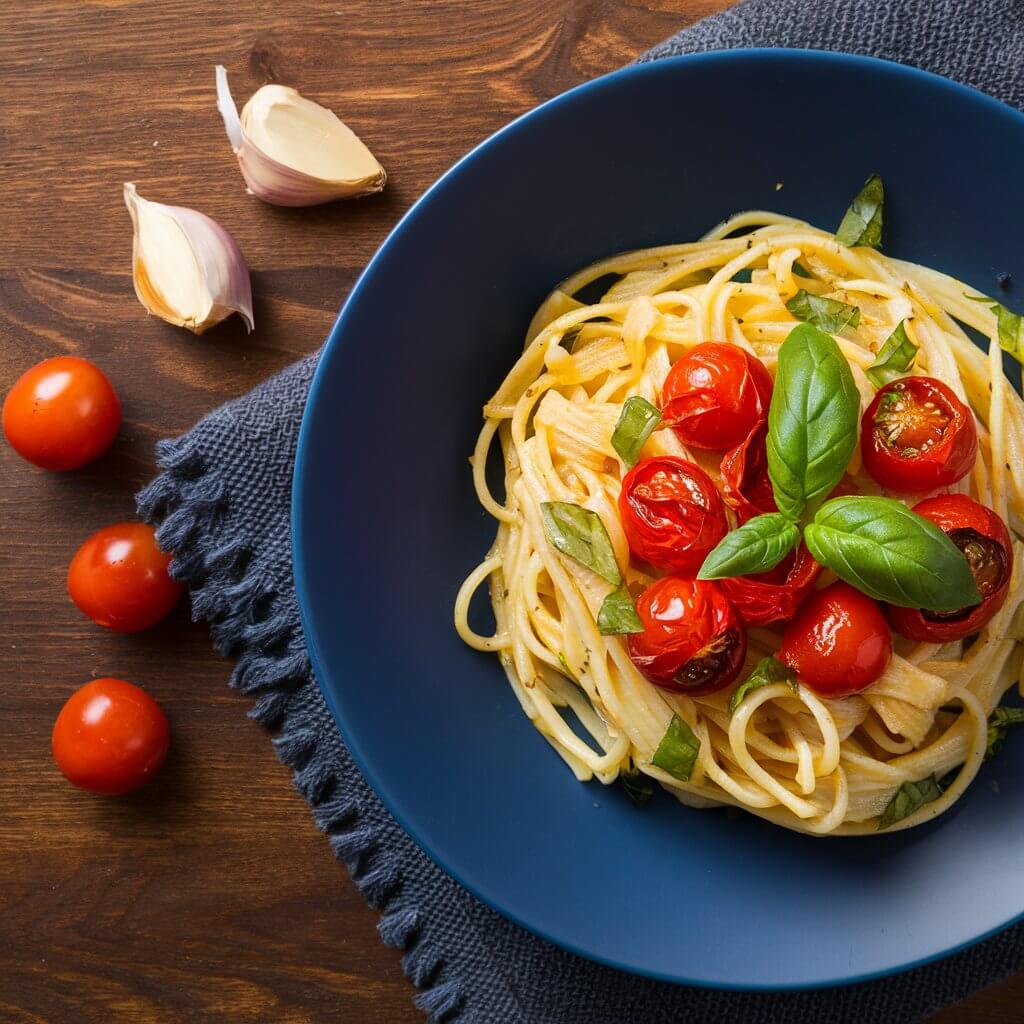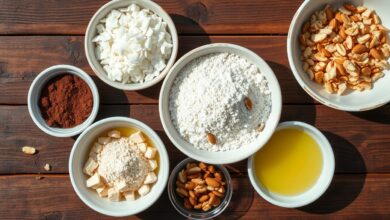Keto Pasta: Your Low-Carb Noodle Alternative for a Guilt-Free Dining Experience

Introduction to Keto Pasta
In the world of modern dieting, the ketogenic (keto) diet has emerged as a popular and effective approach to weight loss and overall health. At the core of the keto lifestyle is the goal of achieving a metabolic state known as ketosis, where the body shifts from primarily using carbohydrates for energy to burning fat instead. This unique metabolic state offers a range of benefits, from increased fat loss to improved mental clarity and reduced inflammation.
However, one of the biggest challenges for keto dieters is finding satisfying replacements for beloved carbohydrate-heavy comfort foods, such as pasta. Traditional wheat-based pasta is notoriously high in carbs, making it off-limits for those strictly adhering to a keto diet. But fear not, the rise of keto-friendly pasta alternatives has opened up a whole new world of culinary possibilities for those following a low-carb lifestyle.
In this comprehensive guide, we will delve into the world of keto pasta, exploring its benefits, the different types available, and a delicious homemade recipe to help you satisfy your pasta cravings while staying true to your keto goals.
Understanding the Benefits of Keto Pasta

Keto pasta, also known as low-carb pasta, is a game-changer for those following a ketogenic diet. These noodle alternatives are designed to provide the same satisfying texture and flavor of traditional pasta, but with a fraction of the carbohydrates. Let’s explore the key benefits of incorporating keto pasta into your diet:
- Low Carb Content: The primary advantage of keto pasta is its significantly lower carbohydrate content compared to regular wheat-based pasta. While a typical serving of traditional pasta can contain upwards of 40-50 grams of carbs, keto pasta options often have as little as 2-10 grams of net carbs per serving. This makes them an excellent choice for maintaining ketosis and supporting weight loss goals.
- Nutrient-Dense Ingredients: Keto pasta is typically made from low-carb, nutrient-dense ingredients such as almond flour, coconut flour, or shirataki noodles. These ingredients not only minimize the carb content but also provide a range of essential vitamins, minerals, and healthy fats that can contribute to overall health and well-being.
- Fiber-Rich: Many keto pasta varieties are high in fiber, which is essential for maintaining healthy digestion and promoting feelings of fullness. This can be particularly beneficial for those following a keto diet, as it can help curb cravings and support long-term adherence to the lifestyle.
- Versatility: Keto pasta can be used in a wide variety of recipes, from classic Italian dishes like spaghetti Bolognese to creative Asian-inspired meals. This versatility allows keto dieters to enjoy a range of flavorful and satisfying pasta-based dishes without compromising their dietary goals.
- Improved Gut Health: The high-fiber content of some keto pasta options may also contribute to improved gut health by supporting the growth of beneficial gut bacteria. This can have far-reaching benefits for overall well-being, including better immune function, reduced inflammation, and enhanced nutrient absorption.
- Satisfies Cravings: Let’s face it, pasta cravings can be hard to ignore, especially for those who have been accustomed to enjoying traditional wheat-based noodles. Keto pasta provides a satisfying alternative that can help curb those cravings, allowing keto dieters to indulge in their favorite pasta dishes without derailing their progress.
Exploring the Different Types of Keto Pasta
As the demand for low-carb alternatives has grown, the variety of keto pasta options has also expanded. Here are some of the most popular types of keto pasta you can explore:
- Almond Flour Pasta: Almond flour is a common base for keto pasta, as it is low in carbs and high in healthy fats and protein. Almond flour pasta often has a delicate, slightly nutty flavor and a texture that closely resembles traditional wheat-based pasta.
- Coconut Flour Pasta: Coconut flour is another popular ingredient used in keto pasta. It provides a similar texture to almond flour but with a slightly sweeter and more tropical flavor profile.
- Shirataki Noodles: Shirataki noodles, also known as konjac noodles, are a unique type of keto pasta made from the root of the konjac plant. These noodles are virtually carb-free, making them an excellent choice for those following a strict keto diet.
- Egg-Based Pasta: Some keto pasta recipes utilize eggs as the primary ingredient, creating a noodle with a rich, custard-like texture. These egg-based pastas can be a great option for those looking to increase their protein intake.
- Vegetable-Based Pasta: For an even more nutrient-dense option, some keto pasta alternatives are made from vegetables such as zucchini, squash, or even cauliflower. These vegetable-based noodles offer a unique flavor and texture profile while providing a boost of essential vitamins and minerals.
When choosing a keto pasta, it’s important to read the nutrition labels carefully and select an option that aligns with your macronutrient goals. Additionally, some keto pasta varieties may require specific cooking techniques or preparation methods to achieve the desired texture and mouthfeel.
Homemade Keto Pasta Recipe
Now that we’ve explored the various types of keto pasta available, let’s dive into a delicious homemade recipe that you can try in your own kitchen:
Ingredients:
- 1 cup almond flour
- 2 large eggs
- 1/4 teaspoon salt
- 1 tablespoon olive oil
Instructions:
- In a large mixing bowl, combine the almond flour, eggs, salt, and olive oil. Mix the ingredients together until a cohesive dough forms.
- Knead the dough for a few minutes, ensuring that it is smooth and well-incorporated.
- Divide the dough into four equal portions.
- Working with one portion at a time, use a rolling pin to roll the dough out into a thin sheet, approximately 1/8-inch thick.
- Using a sharp knife or a pasta cutter, cut the dough sheets into your desired shapes, such as fettuccine, linguine, or penne.
- Bring a large pot of salted water to a boil. Carefully add the keto pasta and cook for 2-3 minutes, or until the noodles are al dente.
- Drain the cooked pasta and toss it with your favorite keto-friendly sauce, such as a creamy Alfredo or a zesty marinara.
This homemade keto pasta recipe is not only delicious but also incredibly easy to make. The almond flour provides a nutty flavor and a texture that closely resembles traditional wheat-based pasta, while the eggs help to bind the dough and create a satisfying mouthfeel.
One of the great things about this recipe is its versatility. You can experiment with different shapes and sizes of noodles, or even try adding herbs or spices to the dough for added flavor. Additionally, the keto pasta can be made in advance and stored in the refrigerator or freezer for easy meal prep.
Incorporating Keto Pasta into Your Lifestyle
Incorporating keto pasta into your lifestyle can be a game-changer for those following a low-carb diet. Whether you’re craving a classic spaghetti Bolognese, a creamy mac and cheese, or a hearty lasagna, keto pasta provides a satisfying and guilt-free alternative that can help you stay on track with your dietary goals.
When using keto pasta in your recipes, it’s important to remember that the cooking time and texture may differ slightly from traditional wheat-based pasta. Experiment with different cooking methods and sauces to find the perfect combination that suits your taste preferences.
Additionally, keep in mind that while keto pasta is a great option for those following a ketogenic diet, it should still be consumed in moderation as part of a balanced, low-carb lifestyle. Pair your keto pasta dishes with plenty of non-starchy vegetables, healthy fats, and protein-rich foods to ensure a well-rounded and nutrient-dense meal.
Conclusion
Keto pasta is a game-changer for those following a low-carb lifestyle. By providing a satisfying and versatile alternative to traditional wheat-based pasta, keto pasta allows you to indulge in your favorite comfort foods while staying true to your dietary goals. Whether you opt for almond flour, coconut flour, or shirataki noodles, the world of keto pasta offers a vast array of options to explore and enjoy.
Remember, the key to success on a keto diet is finding sustainable and satisfying ways to incorporate low-carb alternatives into your daily routine. With the help of delicious and nutritious keto pasta, you can enjoy the taste and texture of pasta without the guilt, allowing you to savor every bite while continuing to make progress towards your health and wellness objectives.




